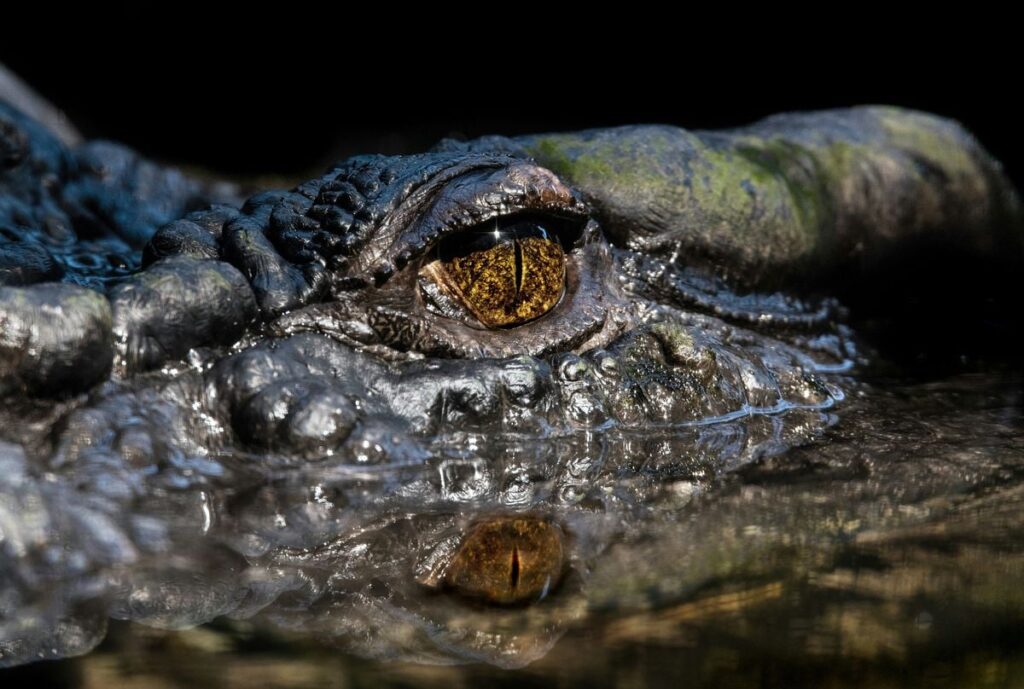Cassius held the title of the largest crocodile in captivity for much of his life. His age? That’s harder to know.
David Clode under Unsplash License
Just ten days after George Craig, a former zookeeper, retired to an assisted living home, his “best mate,” an 18-foot-long saltwater crocodile named Cassius, stopped eating. Shortly after that, on October 15, Cassius went into decline. He died last weekend on November 2 at Marineland Melanesia, the park on Green Island, Australia, where he had lived since 1987.
Now, researchers are hoping to determine the beloved reptile’s age, believing he might have survived as long as 120 years.
The cause of his death was attributed to old age, as Cassius was living well beyond the years of his wild kin. But for Toody Scott, Craig’s grandson, it’s easy to assume there was stress involved in Cassius’ decline, as Craig and Cassius shared a close bond, he tells the Guardian’s Emily Wind.
Cassius brought “joy and companionship to his best mate George for over 37 years,” wrote Marineland Melanesia in a statement on Facebook.
During his life, Cassius earned the world record for being the largest crocodile in captivity—he was as long as the Statue of Liberty’s face. But his age was a mystery. Not even his keepers knew it, as they made up a birthday for him. Following his death, an animal autopsy may finally reveal how old Cassius truly was.
Cassius was captured in the Finniss River in northern Australia in 1984. It’s difficult to determine an adult crocodile’s age, because their growth rate slows down, but back then, researchers thought he was between 30 and 80 years old. Last year, the zoo celebrated Cassius’ 120th birthday—but they admitted that number was “just an estimate,” as Scott told Live Science’s Sascha Pare at the time. His species’ average lifespan in the wild is about 70 years.
Now, researchers will cut into a sample of the croc’s femur bone to count the rings formed within it. These samples will be tested in a lab to determine his age.
The lab “can cross-section it and look for growth rings, just like in trees,” says Sally Isberg, founder of the Center for Crocodile Research in Australia, to Conor Byrne and Adam Stephen of the Australian Broadcasting Corporation (ABC). Though there is a caveat, she says, adding that the growth rings might not be as easily discernible as she hopes.
Counting the growth rings might not reveal the crocodile’s age accurately, adds Grahame Webb, one of the crocodile researchers who helped capture Cassius from the wild after the animal had reportedly been attacking cattle, to the ABC.
“These animals stop growing and they can live for decades afterwards without growing,” Webb tells the outlet.
For some park visitors, Cassius’ immense size and age made him look like a dinosaur, as Craig’s grandson, Scott, tells the Guardian.
“What they’re looking at was just the closest thing that they could get to a living dinosaur,” Scott adds. “He just looked ancient.”
When he died, Cassius was nearly 18 feet long, but parts of his snout and tail were missing. If he’d had those body parts, he might have been even bigger. His species of crocodile, Crocodylus porosus, can grow to be more than 23 feet. Cassius lost the title of world’s largest crocodile in captivity in 2011 to a 20-foot crocodile named Lolong in the Philippines. But when Lolong succumbed to an infection in 2013, Cassius reclaimed the crown.
Despite his battle scars and missing parts, Cassius had charm, Scott tells the ABC. Cassius would get excited when he saw Craig on his mobility scooter around the park. Craig, 94, left the island for aged care on the mainland.
Isberg tells the ABC that with Cassius’ death, Craig “lost a long-term friend.”


